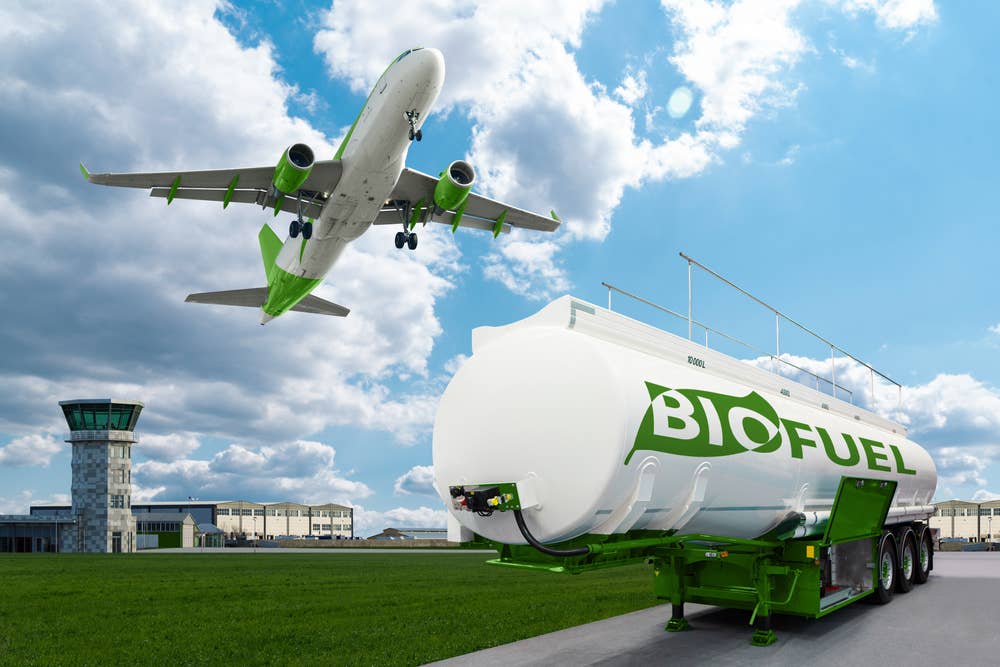Sustainable Aviation Fuel Production Tripled in 2022: IATA
While growth is promising, refiners need incentives to produce more SAF to meet net zero by 2050.

Refiners are ramping up production of SAF quickly, but supply is not enough to reach airline industry’s long-term emissions goals. [Credit: Shutterstock]
The International Air Transport Association (IATA) estimates that total production of sustainable aviation fuel, or SAF, tripled in 2022, reaching at least 300 million liters, or about 79.3 million gallons.
SAF production totaled 100 million liters, or 26.4 million gallons, in 2021.
The organization said there are “more optimistic” estimates that place the total as high as 450 million liters, but said, “Both scenarios position the SAF industry on the verge of an exponential capacity and production ramp-up toward an identified tipping point of 30 billion liters by 2030, with the right supporting policies.”
The path to the group’s goal of net zero CO2 emissions by 2050 will require continued rapid production increases and more incentives for refiners to make more SAF, IATA said. According to recent estimates, SAF is expected to account for 65 percent of the goal, which would require annual production capacity of 450 billion liters by 2050, IATA said.
“There was at least triple the amount of SAF in the market in 2022 than in 2021,” said Willie Walsh, IATA’s Director General. “And airlines used every drop, even at very high prices! If more was available, it would have been purchased. That makes it clear that it is a supply issue and that market forces alone are insufficient to solve it. Governments, who now share the same 2050 net zero goal, need to put in place comprehensive production incentives for SAF. It is what they did to successfully transition economies to renewable sources of electricity. And it is what aviation needs to decarbonize.”
More than 450,000 commercial flights have used SAF so far and an increasing number of airlines have signed agreements with fuel producers to use the fuel, suggesting demand will continue to grow, IATA said in its report.
The organization said SAF is competing for capacity in refineries that also produce biodiesel and biogas. Capacity at those refineries is expected to increase five-fold by 2025 compared with 2022.
“The challenge for aviation is to secure its supply of SAF from this capacity. And to do that successfully governments need to put in place SAF production incentives similar to what is already in place for biogas and biodiesel,” IATA said.

Subscribe to Our Newsletter
Get the latest FLYING stories delivered directly to your inbox






